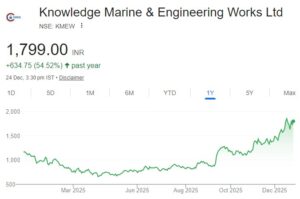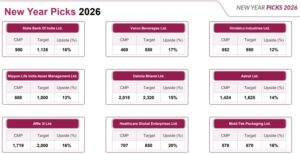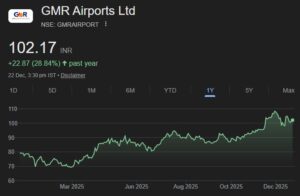
Rakesh Jhunjhunwala Model Portfolio performance in 2012 of registering gains in excess of 35% was achieved by investing only in top-quality stocks with a proven track record.

In picking stocks for the “Rakesh Jhunjhunwala Model Portfolio 2013”, I have been guided by a simple philosophy. Only invest in stocks that have been multibaggers and proven successes in the past few years. Why? The logic is that these companies have a proven business model, quality management, top-notch product, pricing power, market dominance etc.
If these companies have been churning out high returns over the past several years, what is to prevent them from churning out similar returns in the next 3, 5 and 10 years and become multibaggers all over again?
In fact, given their experience and expertise in the market place, some of the companies may be able to better their performance in the future.
Then the question is about valuations. There is no point in waiting for “mouth watering valuations” because that way you just lose out on good buying opportunities. The important thing is whether the valuations are reasonable having regard to the expected earnings of the stock. Also, if you buy the stocks slowly and steadily over a period of time, you get to take advantage of price falls.
So, lets get down to our top 10 stocks in the Rakesh Jhunjhunwala Model Portfolio 2013.
|
S. No |
Stock |
CMP on 17.01.2013 |
|
1. |
HDFC Bank |
667 |
|
2. |
Titan Industries |
276 |
|
3. |
Page Industries |
3,402 |
|
4. |
Hawkins Cookers |
2,385 |
|
5. |
Supreme Industries |
302 |
|
6. |
Amara Raja Batteries |
296 |
|
7. |
Cera Sanitaryware |
445 |
|
8. |
IPCA |
511 |
|
9. |
Kotak PSU Bank ETF |
410 |
10. |
SpiceJet |
45 |
HDFC Bank, Titan Industries, Page Industries & Hawkins Cookers are stalwarts which have proved their mettle in the 2012 portfolio. They need no introduction.
Now, it is true that all of these stocks are “expensive” in relation to their TTM EPS. However, the first thing you have to remember is that these stocks have always been “expensive” but that hasn’t prevented them from delivering super-duper returns. Next, the question you have to ask yourself is whether the rate of growth that these companies have shown over the past several years is likely to be continued over the next 3, 5 and 10 years. If the answer is in the affirmative, then the present valuations of these stocks will look quite cheap in relation to the future earnings.
Let’s say a quick hello to the newcomers. All of these are stocks that we should have homed in on much earlier. Anyway, better late than never!
Supreme Industries
Supreme Industries is such a low profile stock that you wouldn’t notice it even if you bumped into it. Yet, in 10 years (1.1.2002), it has given an incredible return of 6701%. In 3 years (1.1.2010) it has given a return of 283%. In the last year, it gave a return of nearly 70%.
Now, how can a stock of this pedigree not be in your portfolio?
Supreme Industries is acknowledged as a market leader of the Indian plastic industry. It has a diversified product portfolio spread across four business divisions broadly categorized into: piping systems, packaging films, consumer products and industrial products.
Supreme Industries has shown strong growth in top line and bottom line with a CAGR of 22% and 44%, respectively, during FY 2008-12. Its EBITDA margins also expanded from 11% in FY08 to 14.7% in FY12 due to increase in production and increase in value added products. Its ROAE during FY 2008-12 stood at 32.8%.
The other point is that Supreme Industries has laid out a huge capex of Rs.1,100 crore spanning 5 years between FY 2012-16 through various projects. This will enhance the present capacity from 3,46,000 MT to 6,30,000 MT by FY16. In FY 2013 itself, Supreme Industries has planned total capex outlay of Rs.400 crore to expand capacity across all product verticals and to set up a new facility for composite product.
If all goes as per plan, Supreme Industries could be a much larger and profitable company in the next 5 years in comparison to what it is today.
Amara Raja Batteries
Amara Raja Batteries, in the past 10 years (1.1.2002), has given investors a return of 4939%. In the past one year itself, it has given a return of 141%.
In FY 2013, Amara Raja Batteries has recorded a scorching performance. Its stock price has kept pace and the valuation discount against arch-rival Exide Industries has narrowed to about 20% from 35%.
The question is whether even that discount is justified or will get breached.
Amara Raja’s sales growth has come from the automobile segment (OEMs and the replacement market) and the industrial segment (UPS). Its’ growth momentum can be expected to be sustained in the years ahead due to strong market presence and a demand for the product.
Amara Raja has also announced that it will double its two-wheeler battery manufacturing capacity with the addition of three more lines at its existing manufacturing base in Tirupati. It is investing Rs 100 crore in the expansion project and will enhance the manufacturing capacity for two-wheeler batteries from 4.8 million units a year to 9.4 million units by the end of next financial year. This will help Amara Raja meet the demands of OEM customers like Honda Motor, Hero Motor, Bajaj Auto etc. Amara Raja’s other expansion project of the four-wheeler automotive batteries from 5.6 million units to 6 million units a year is expected to be completed by May 2013. It is also expected to complete the expansion of the UPS battery segment from 1.8 million units a year to 3.6 million units a year by September 2012.
The best part is that Amara Raja does not have great debt to worry about (its Debt:Equity ratio is only 0.10). Instead, it has cash of about Rs 350 crore which will be used to fund the expansion project.
Cera Sanitaryware
Cera Sanitaryware is yet another stock that has delighted investors with a 3655% return in 10 years (1.1.2002). In the past one year itself, it has given gains of 137%.
Cera Sanitaryware’s performance in FY 2013, and especially that in the December 2012 Quarter was excellent.
Cera Sanitaryware’s USP can be nicely summed up as follows:
(i) Established presence, strong brand value, good market share & focus on Tier 2 & 3 towns;
(ii) Past Growth momentum likely to be retained in view of the
enhanced sanitaryware capacity from 2m pcs to 2.7m pcs;
(iii) 25% + RoCE and low debt.
IPCA
IPCA has also been a gorgeous performer in the past with a 10 year (01.01.2002) return of 6235% and a 3 year return of 133%. In the past 12 months it has given a return of 75%.
According to a research report from Nirmal Bang, IPCA is now “entering the big league“.
IPCA has announced that it will consciously make a tilt in its business mix – from API (Active Pharmaceutical Ingredient) to formulations and from low-margin businesses (European generic business, API) to high-margin businesses (domestic formulations, branded products, institutional business). The Indore SEZ has presently not been cleared by the USA FDA. When that happens (probably in FY 2015), there will be a further boost in revenues and margins. IPCA’s valuations (about 15.0x and 12.0x FY2013E and FY2014E earnings) are also quite reasonable given its’ strong growth prospects of 29% earnings CAGR likely over FY12-FY15E, positive free cash flow generation and expansion in RoE/ RoCE on increased capacity utilisation.
Kotak PSU Bank ETF
Now, there is a reason to like Bank stocks in general and PSU Banks in particular.
Firstly, the impending rate cut by the RBI in the first half of 2013 means that Bank stocks are destined to soar. PSU Banks have more to benefit because they will enjoy a huge mark-to-market gain as a result of their holdings of long-dated government securities.
Second, the recent announcement by the Union Cabinet that capital funds to Public Sector Banks (PSBs) to the tune of Rs.12,517 crore would be provided during the year 2012-13 to maintain their Tier-l CRAR at comfortable level, so that they remain compliant with the stricter capital adequacy norms under BASEL-III means that there will be rights issues of the PSU Banks. With banks, an increase in the book value, though resulting in equity dilution, is always good news.
Third, PSU Banks have underperformed their Private sector peers which means that there is more left on the table for us to feast on.
Now, the question is why Kotak PSU Bank ETF. The reason is that in one convenient package we get a nice mix of the large-cap and mid-cap PSU Banks. The present constituents of the Kotak PSU Bank ETF are State Bank of India (49.18%), Bank of Baroda (11.28%), Punjab National Bank (9.18%), Canara Bank (5.84%), Union Bank of India (4.80%), Bank of India (4.60%), Oriental Bank of Commerce (3.63%), IDBI Bank Ltd (3.26%), Allahabad Bank (2.53%), Andhra Bank (2.27%), Syndicate Bank (1.96%) & Indian Overseas Bank (1.45%).
On a YOY basis, Kotak PSU Bank ETF has given a return of 34%. It is not unreasonable to expect that there will be more gains to store in the coming years.
SpiceJet
SpiceJet becomes a ‘Buy‘ applying Rakesh Jhunjhunwala’s famous dictum that investors have to “see tomorrow“.
Lets look at the facts. Since the Government announced in September 2012 that foreign airlines will be permitted to take up 49% equity in Indian carriers, Jet Airways, SpiceJet & Kingfisher have been approached by a number of Middle East airlines like Emirates, Qatar Airways & Etihad Airways who are keen to enter the Indian sub-continent.
Jet Airways has now formally announced that it is in “final discussions” with Etihad Airways for a stake sale. Rumors are rife that Etihad will pay upto $330 Million (Rs. 1,600 crores) for a 24% stake in Jet Airways. This means that Jet Airways is being valued at nearly $1 – 1.5 billion plus (Rs. 6,400 to Rs. 7500 crores), a significant premium to its current market cap of about Rs. 5,000 crores. There will also be a re-rating with the entry of a strong financial and operational partner.
Now, this is bound to have a salutary rub-down effect on SpiceJet which is operationally as efficient as Jet Airways. SpiceJet has a market cap of only Rs. 2,100 crores and there is no reason why it should also not command a premium. SpiceJet has also hinted that it has initiated talks with potential buyers. Also, its promoters Kalanithi Maran and his wife Kavery Kalanithi have resigned from the board of directors of Kal Airways, the holding company of SpiceJet, probably as a precursor to the stake sale.
So, whether SpiceJet announces a stake sale or not, the announcement of a deal by Jet Airways should itself propel SpiceJet to new heights because there will be a re-rating of the entire Industry. And if SpiceJet also announces a deal, then the sky is the limit!
But, in all of this, you must remember to be cool as a cucumber because the process may take time and there will be agonizing moments when you will wonder if it is at all the right thing to do. But, the risk-reward ratio being in favour, one should take the chance and not let the opportunity slip out of hand.
So, there you have it. The Rakesh Jhunjhunwala Model Portfolio 2013 consisting of 10 top-notch winner stocks.
Disclaimer: This is an imaginary portfolio named “Rakesh Jhunjhunwala Model Portfolio” in honour of the Badshah of Dalal Street. The Badshah has nothing to do with this Portfolio. Rakesh Jhunjhunwala’s official & real-life portfolio is here





